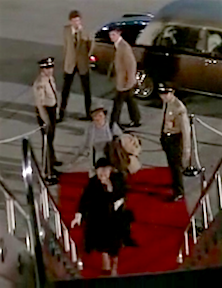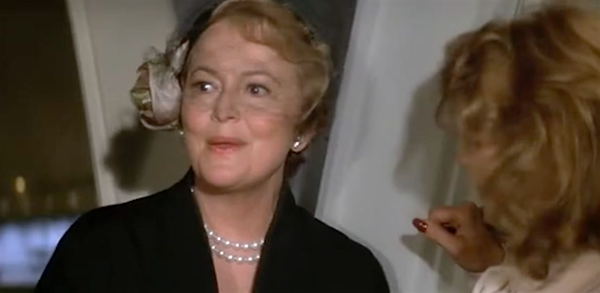Olivia @ 100: Airport '77
 Wednesday, June 29, 2016 at 2:39PM
Wednesday, June 29, 2016 at 2:39PM  Don't get on the plane! It's a Disaster Movie!Team Experience is looking at highlights and curios from the filmography of Olivia de Havilland for her Centennial this Friday. Here's guest contributor Sean Donovan...
Don't get on the plane! It's a Disaster Movie!Team Experience is looking at highlights and curios from the filmography of Olivia de Havilland for her Centennial this Friday. Here's guest contributor Sean Donovan...
Airport ’77, the third film of the Airport franchise, capitalized on the immense success of the 70s disaster movie craze in the twilight of its years. Just one year later in 1978, the critical and box office failure of Irwin Allen’s The Swarm showed how much audiences had sobered up, no longer excited by disaster movies and more interested in openly mocking them, based on their cheesy acting and overwrought destruction (a movement chronicled by Ken Feil in his worth-the-read book Dying for a Laugh: Disaster Movies and the Camp Imagination). So if something feels lacking and obligatory about Airport ’77- in which a botched hijacking lands a Boeing 747 in the ocean, the passengers struggling to get back to land safely- that’s only because the film presents a crew of movie stars eager to cash their checks and get out as quick as possible.
Among them is our honored centennial, Ms. Olivia de Havilland! And who can blame her for dipping into the disaster movie depths?

Her generational cohort Shelley Winters scored an Oscar nomination for being the token old lady to brave disaster (at the age of 52, but that’s Hollywood), in the genre-defining The Poseidon Adventure. Older actresses like Helen Hayes, Gloria Swanson, and Myrna Loy had already wandered into the Airport franchise, Hayes walking away with an Oscar for her efforts. As an aging member of Hollywood royalty in the 1970s, it seems one of your duties was to class up a trashy disaster film with your mere presence...










